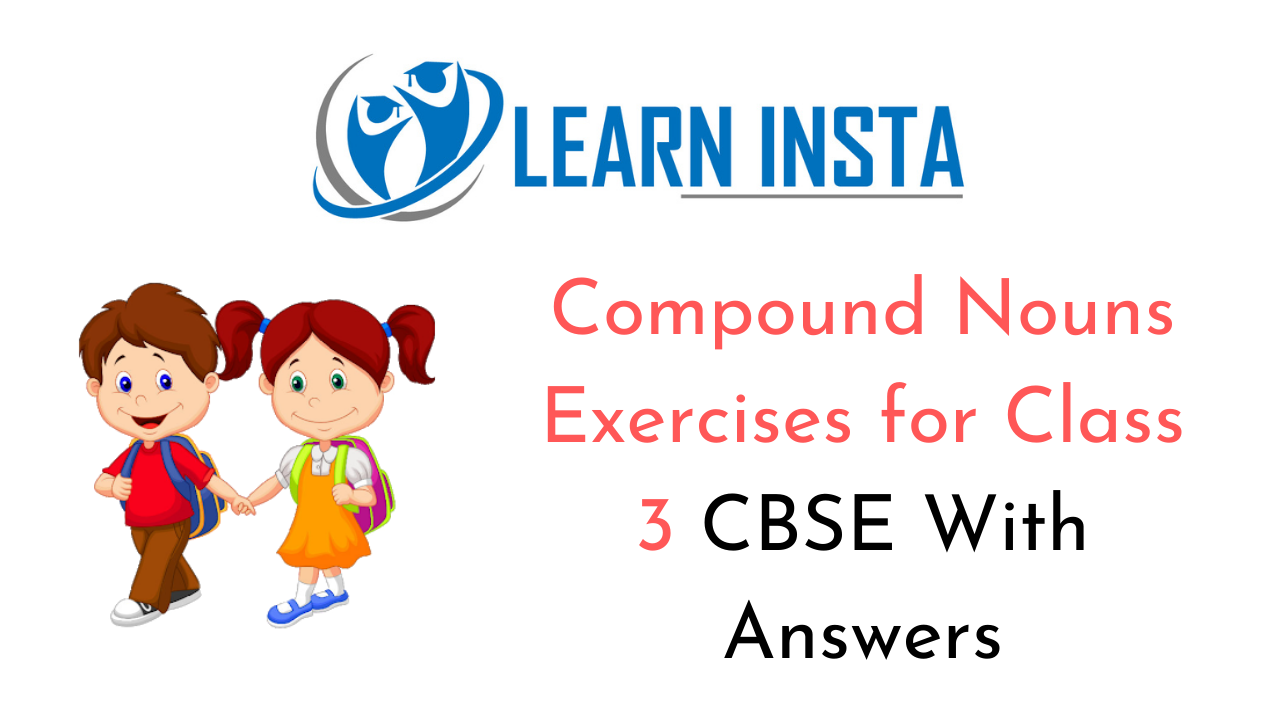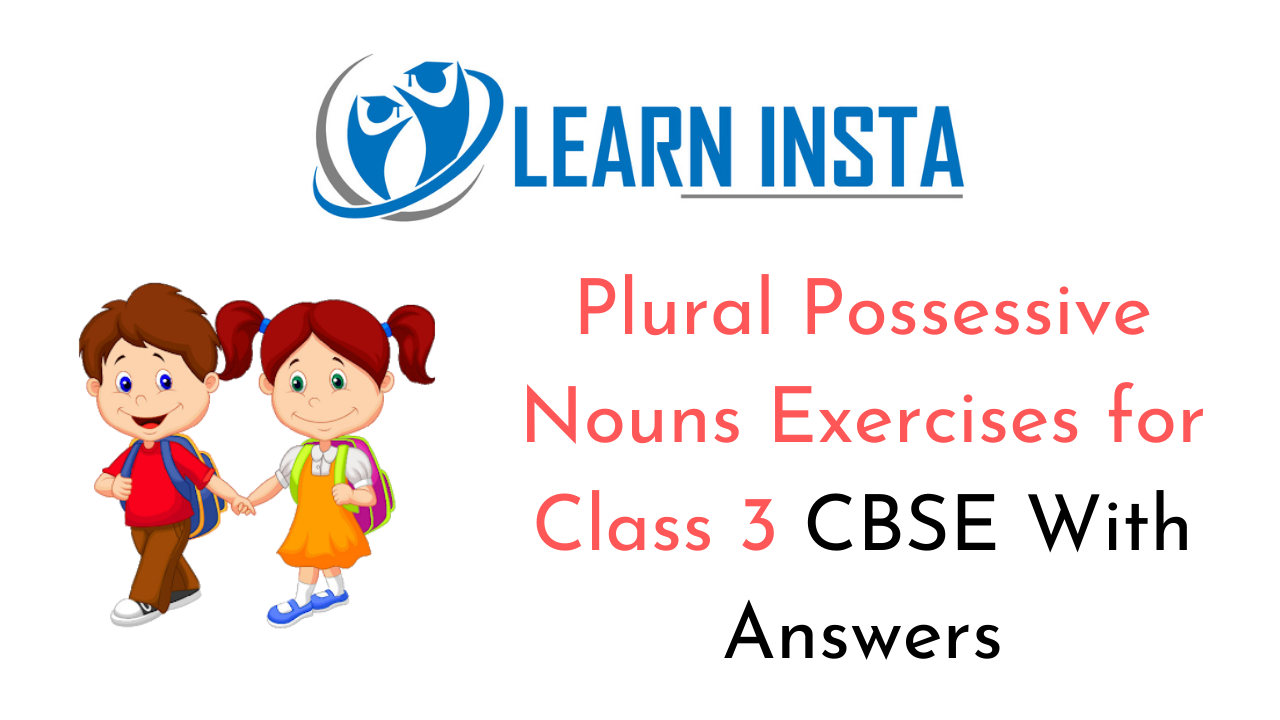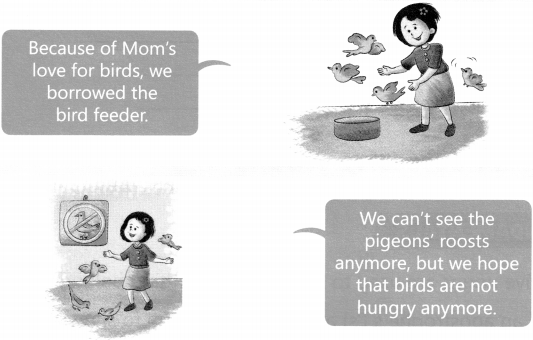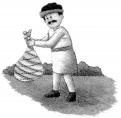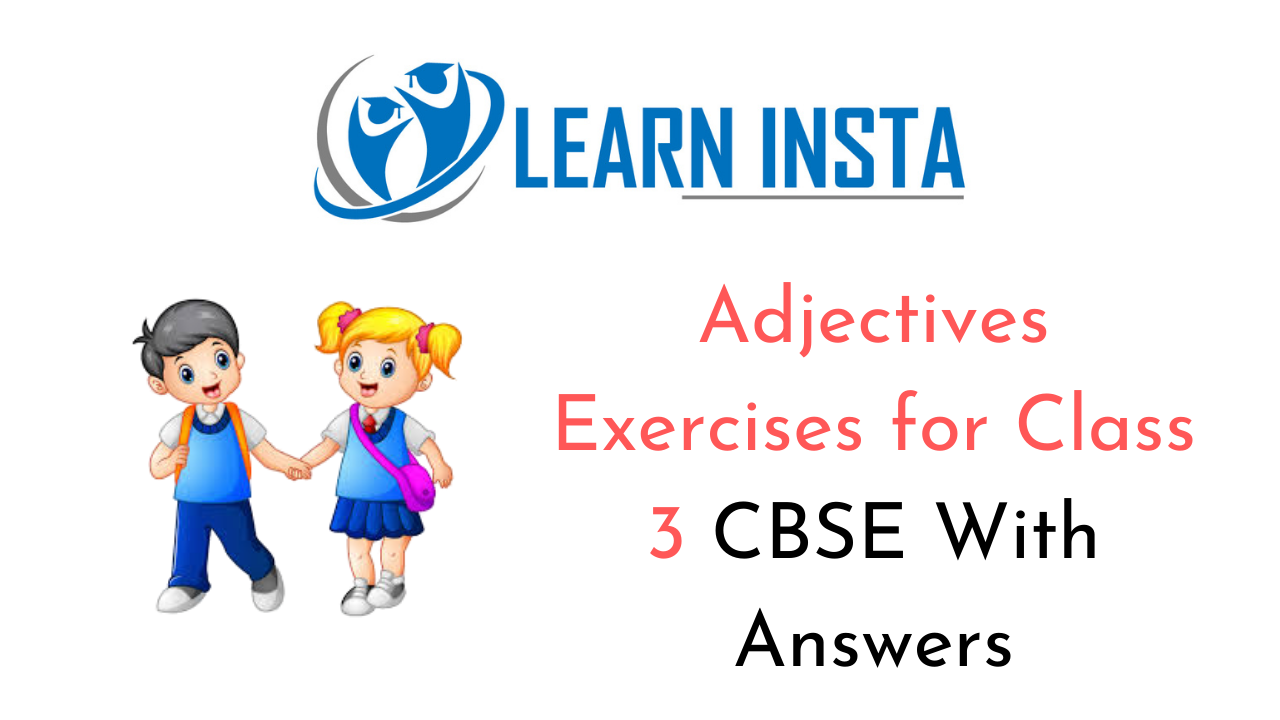
This grammar section explains English Grammar in a clear and simple way. There are example sentences to show how the language is used.
Exercise On Adjectives Worksheet for Class 3 CBSE with Answers PDF
- Describing words tell us more about nouns. A describing word is called an adjective.
- They give information about people, place or things.
- It tells how he/she/it looks, feels, sounds, smells or tastes.
- Names of the colours are used as describing words.
- Describing words have their opposites. Examples: Black-White, Tall-Short, Thick-Thin.
- To compare two people or things we use describing words.
- These words are called the comparative form of adjectives.
- To compare naming words we often add -r or -er to the describing word or replace the-y ending with -ier to form adjectives of comparison. For example close-closer, noisy- noisier.
- Than is the key word for the comparing words. For longer words we use the word ‘More’ – More beautiful, More charming.
- Some describing words answer how many people, places, animals or things are there.
- They are called as describing number words.
- All and few are also describing number words. My, our, your, his, her, its, their are also describing words.
- They show that an object belongs to someone or something.
Adjectives Worksheet Exercises for Class 5 with Answers CBSE PDF
A. Choose the correct one.
1. My brother is taller/more taller than me.
2. This way is shorter/more shorter than the others.
3. This book is expensive/more expensive than the others.
4. This car is cheaper/ more cheaper than any other car in the gallery.
5. Reading books is better/good than watching television.
B. Replace the underlined words with correct possessive adjectives. His/her/its/their
1. This is Nancy’s bag. _____________
2. This is Kitty and Arun’s house. _____________
3. These are Tony’s football boots. _____________
4. The dog’s name is Pluto. _____________
C. Match the adjectives with their opposites.
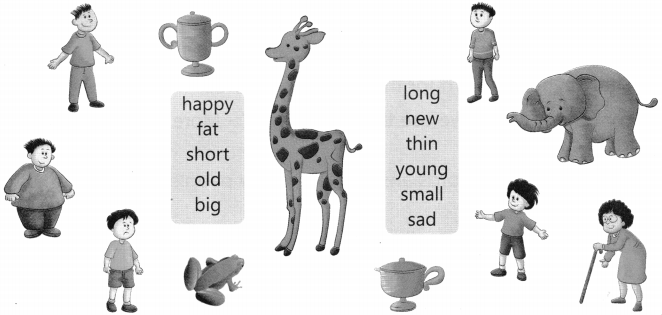
D. Fill in the blanks with suitable describing words.
1. I have _____________ dress.
2. _____________ mangoes look yellow.
3. He lives in an _____________ house.
4. He entered through the _____________ door.
5. A _____________ man lived near the _____________ temple.
E. Fill in the blanks with a number.
1. I have _____________ eyes.
2. Our school won the _____________ prize.
3. There are _____________ planets in our solar system.
4. Leap year comes after every _____________ years.
5. There are _____________ players in a cricket team.
F. Pick the best two adjective choices to complete each sentence. Make sure each sentence makes sense! The first one has been done for you.
1. Adjective choices: wet, green, floppy, many
The dog had a wet nose and floppy ears.
2. Adjective choices: tall, cold, spicy, yellow
The sunflowers in my backyard are _____________ and _____________
3. Adjective choices: five, delicious, shiny, busy
I found a _____________ quarter lying on the _____________ sidewalk!
4. Adjective choices: blue, striped, sharp, frozen
The _____________ tiger had _____________ teeth.
5. Adjective choices: dull, sandy, hot, cheesy
We ate the _____________ and _____________ pizza.
6. Adjective choices: (healthy, warm, toasty, many)
The refrigerator was packed with _____________ foods.
